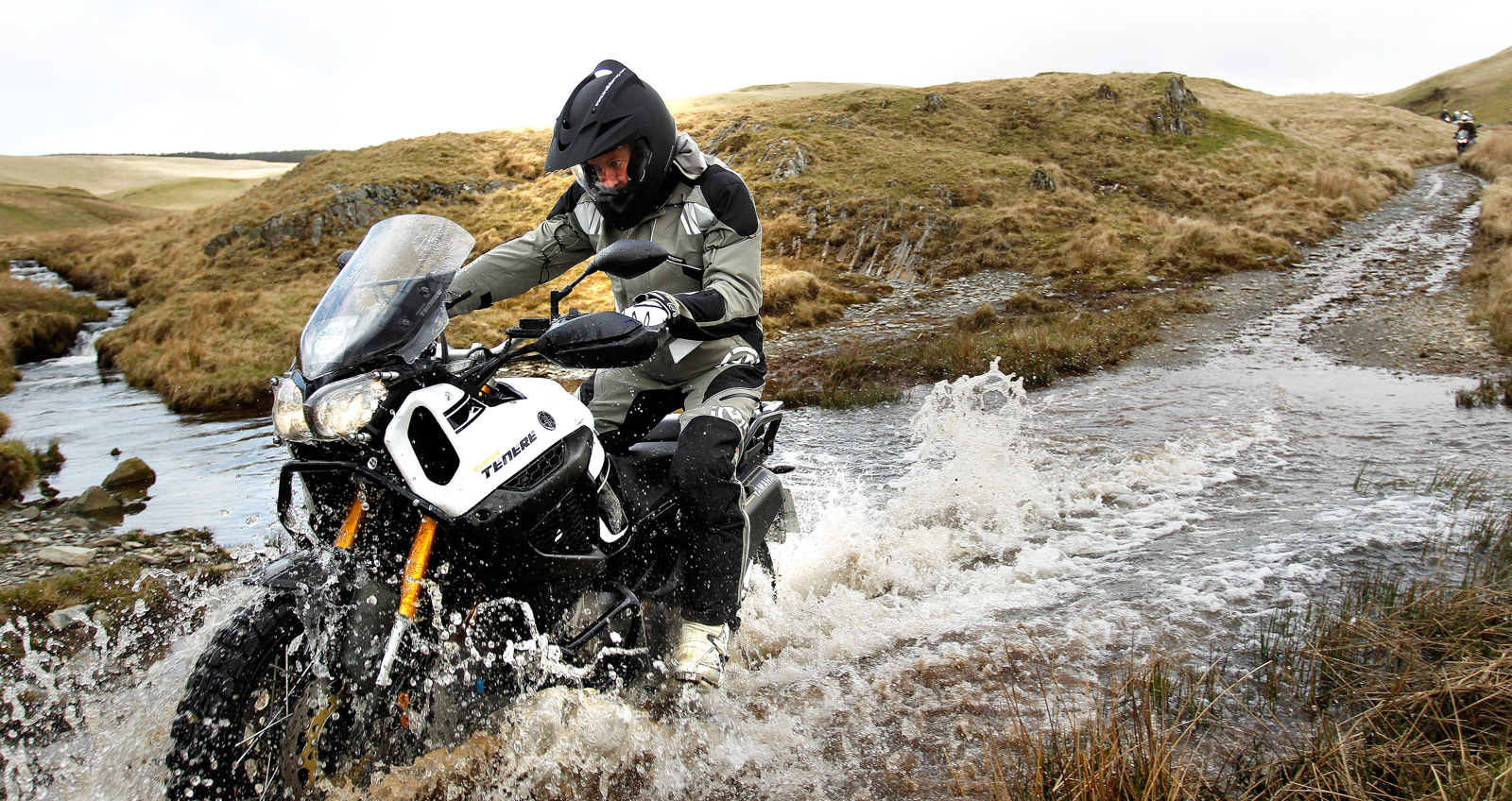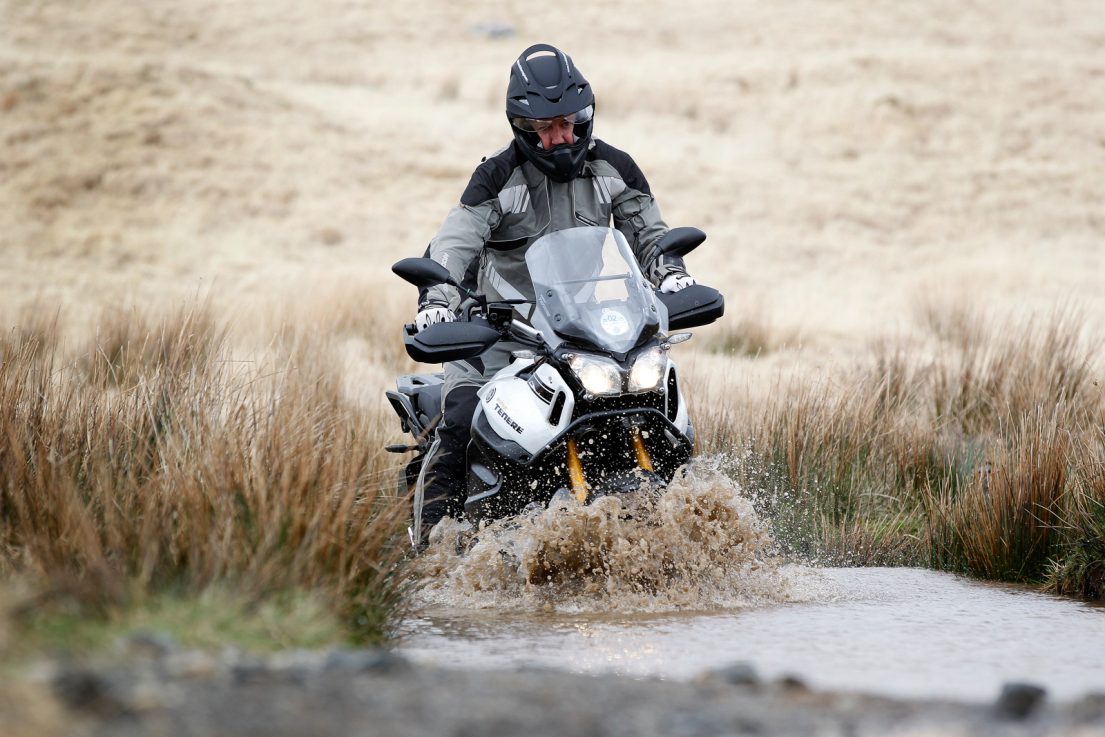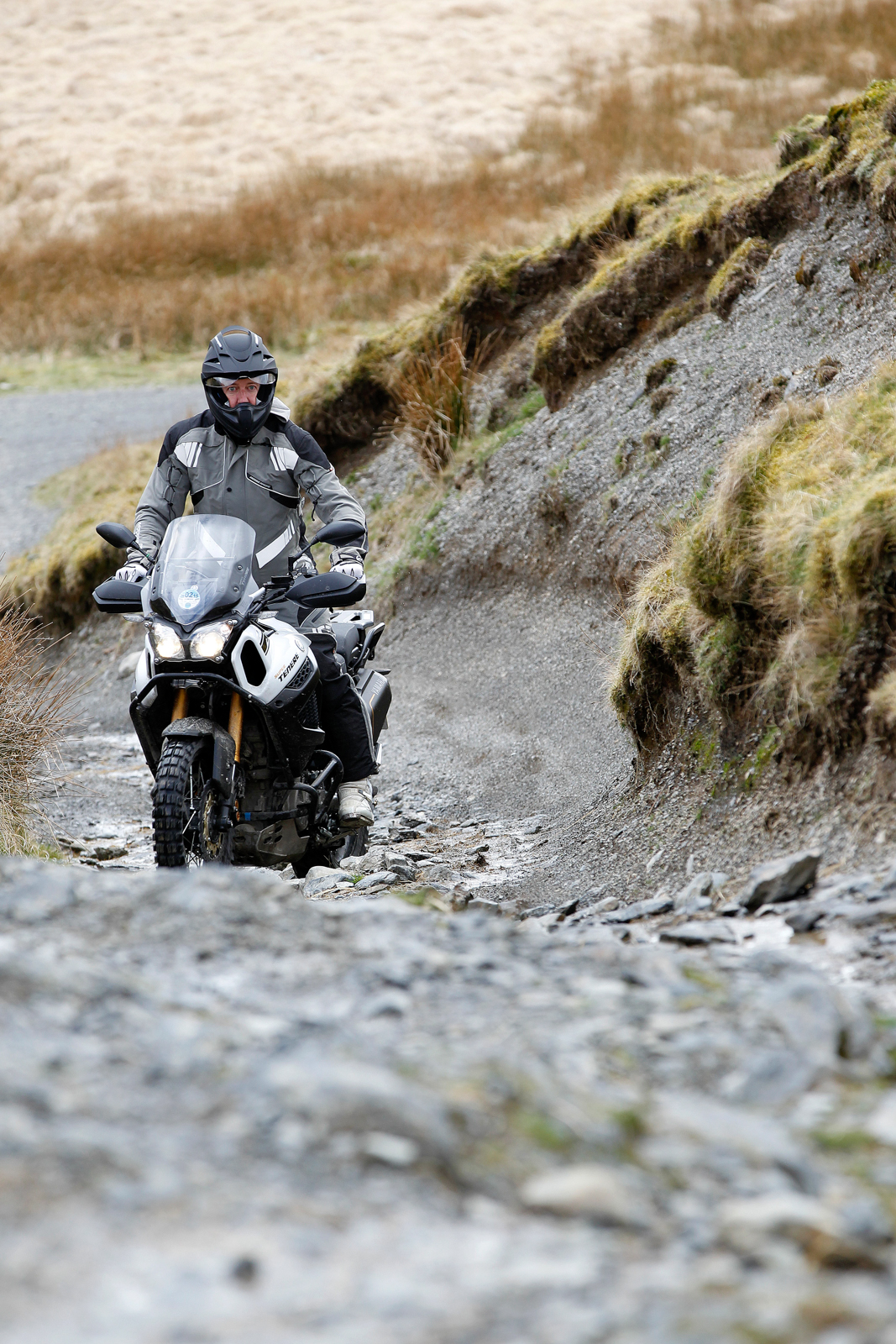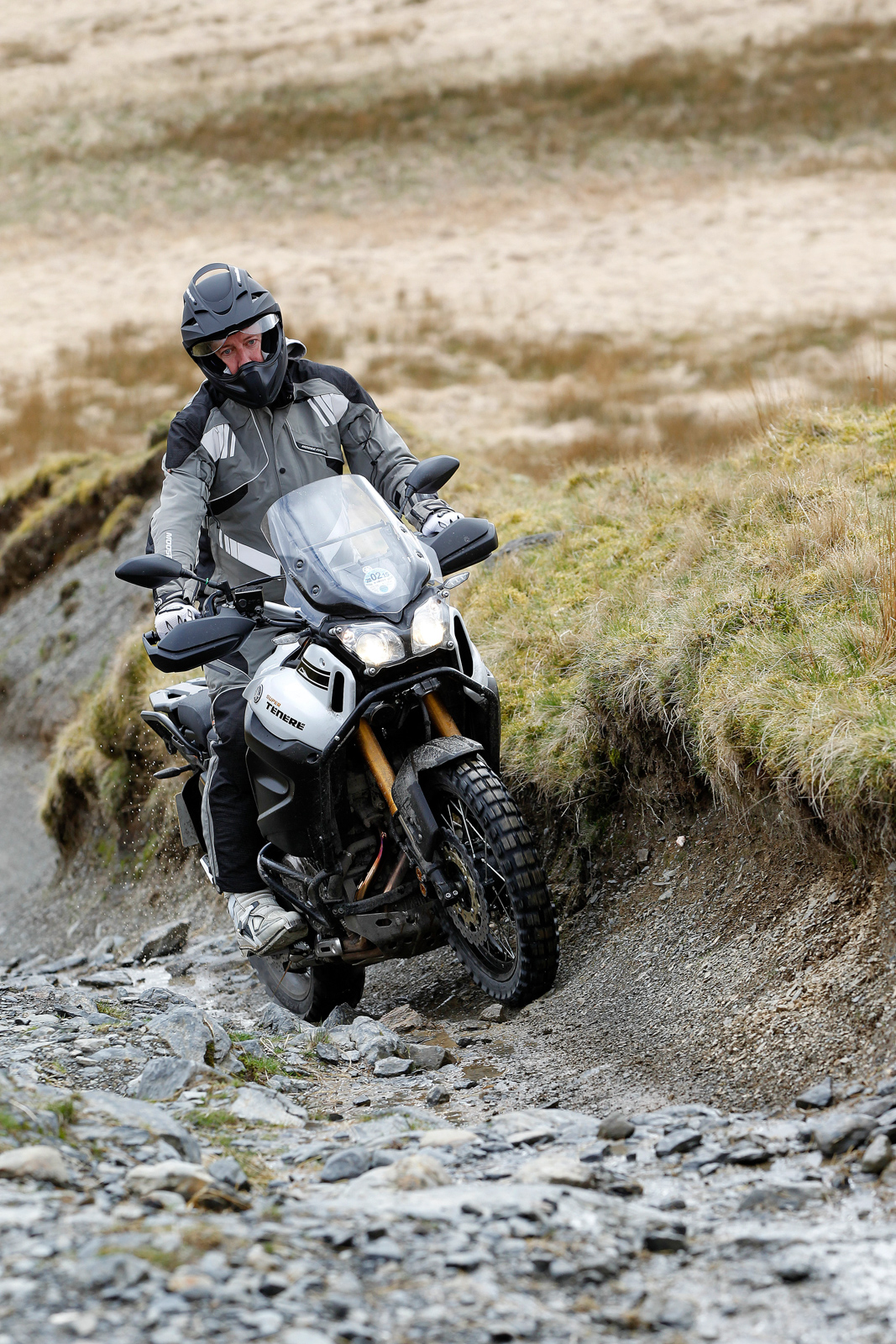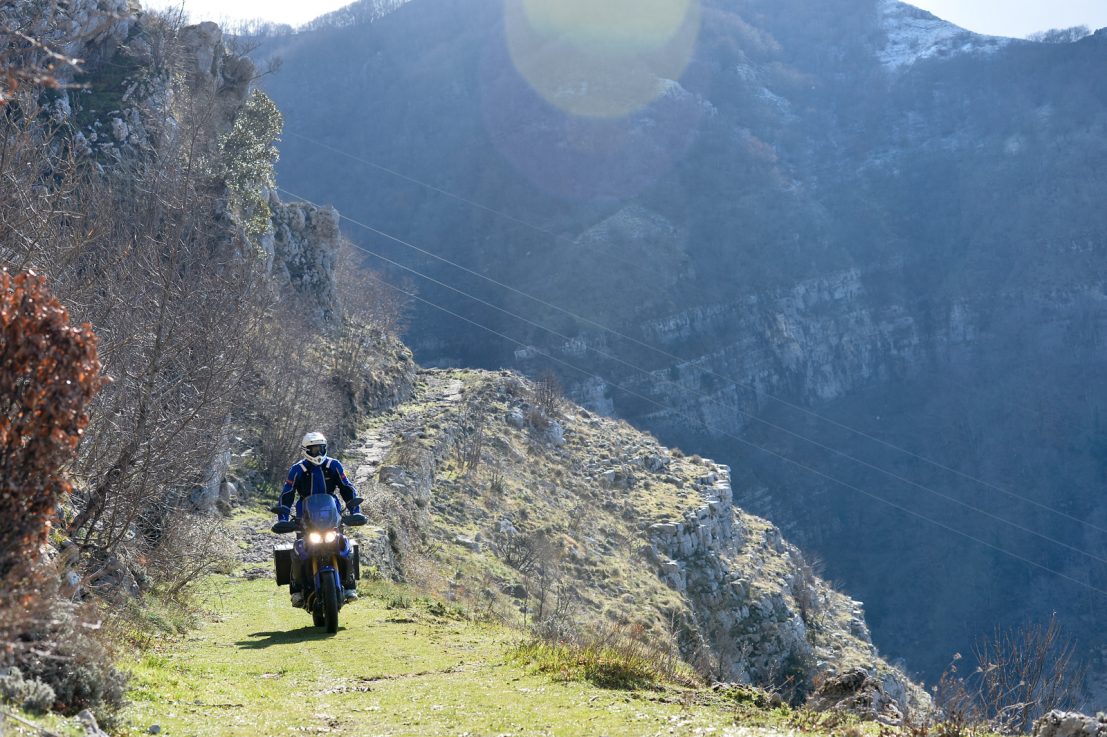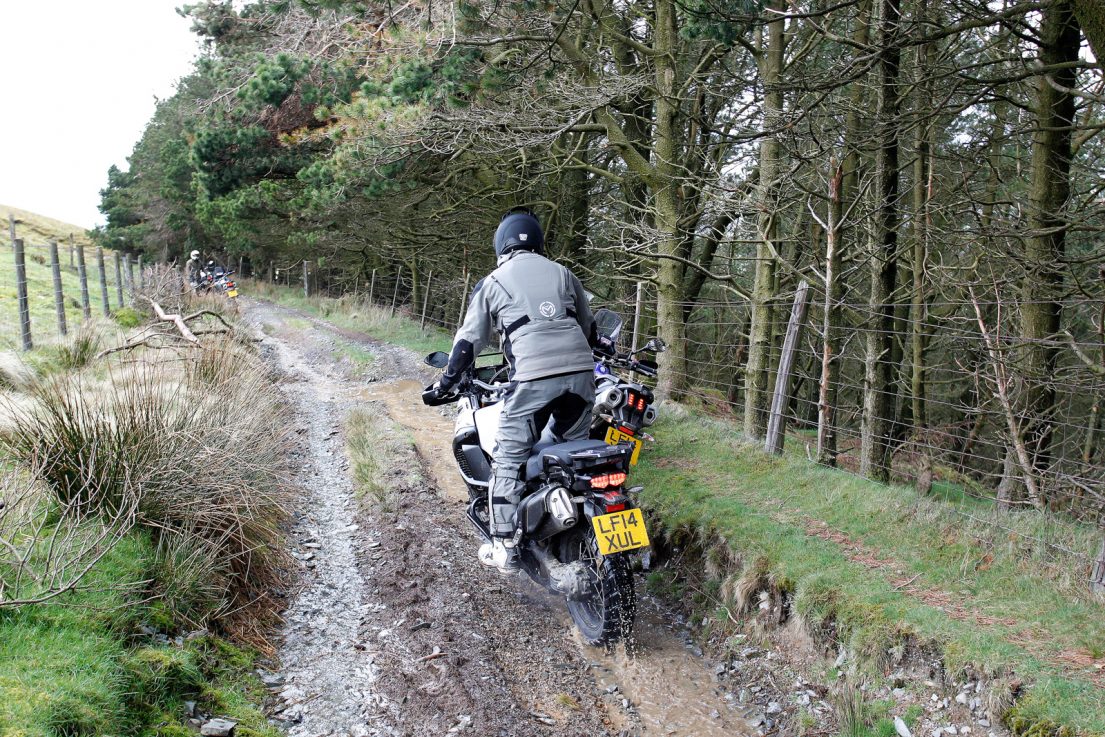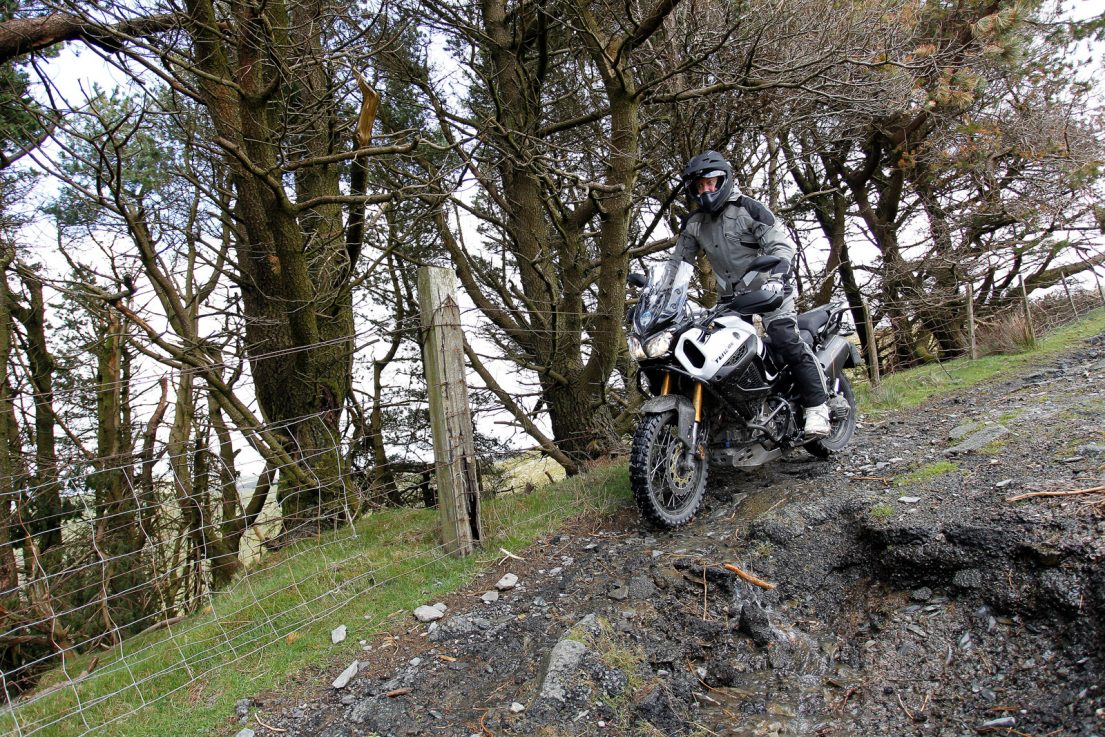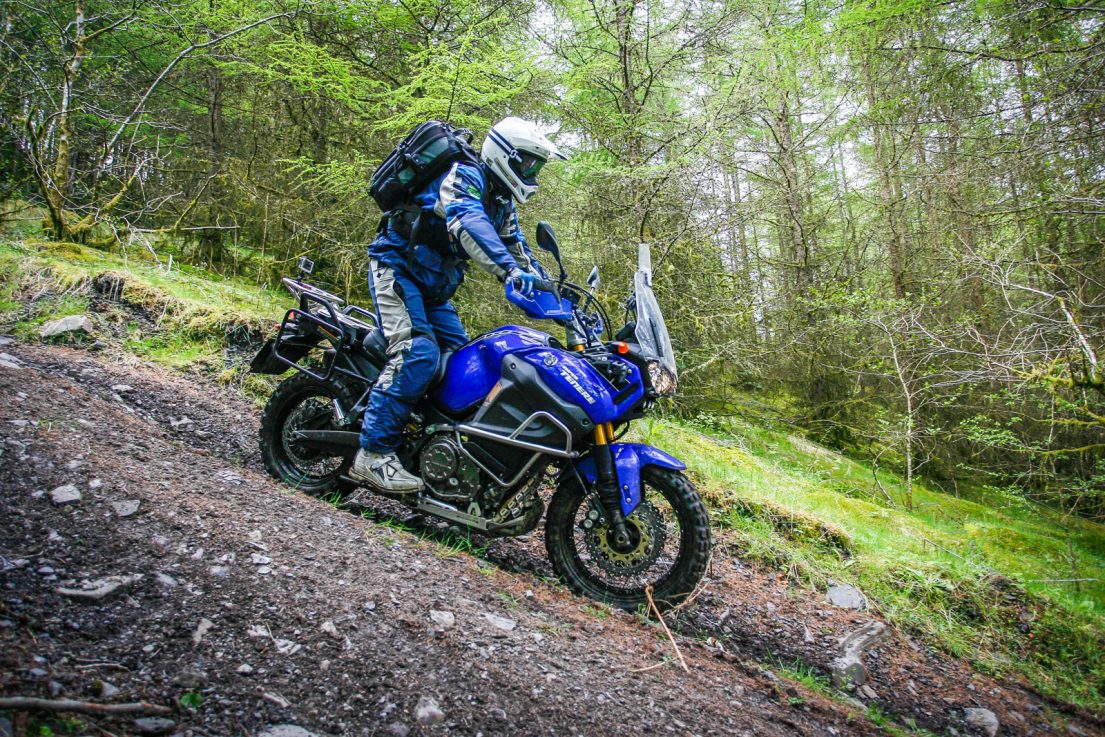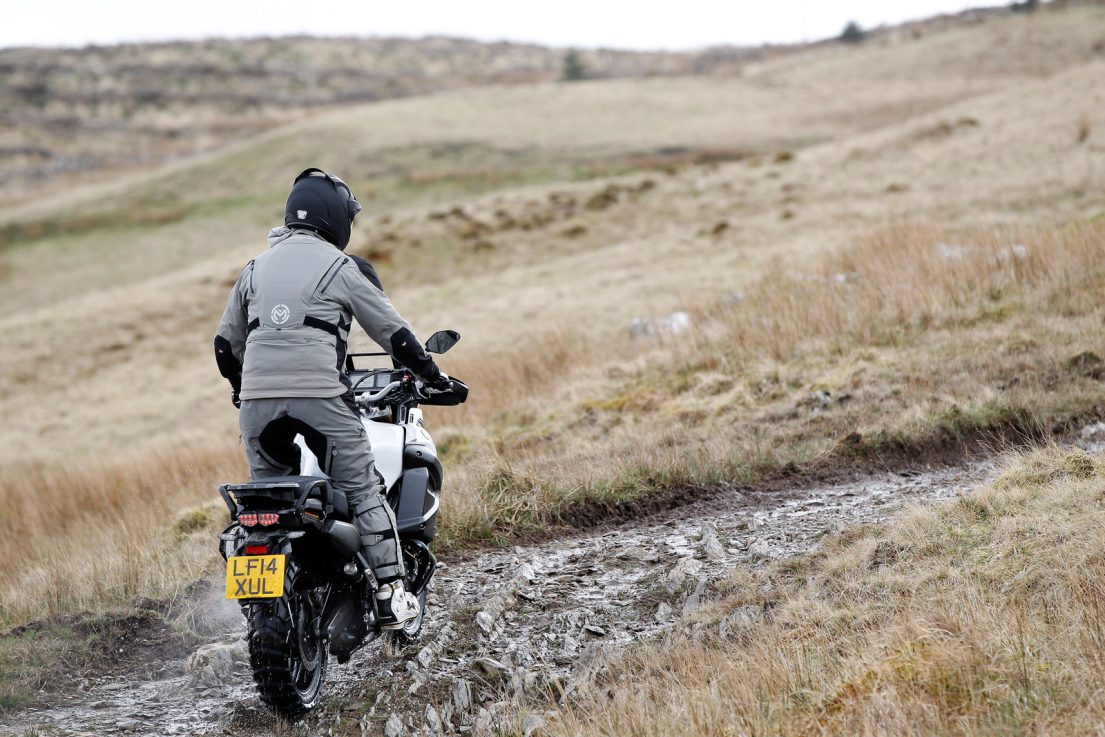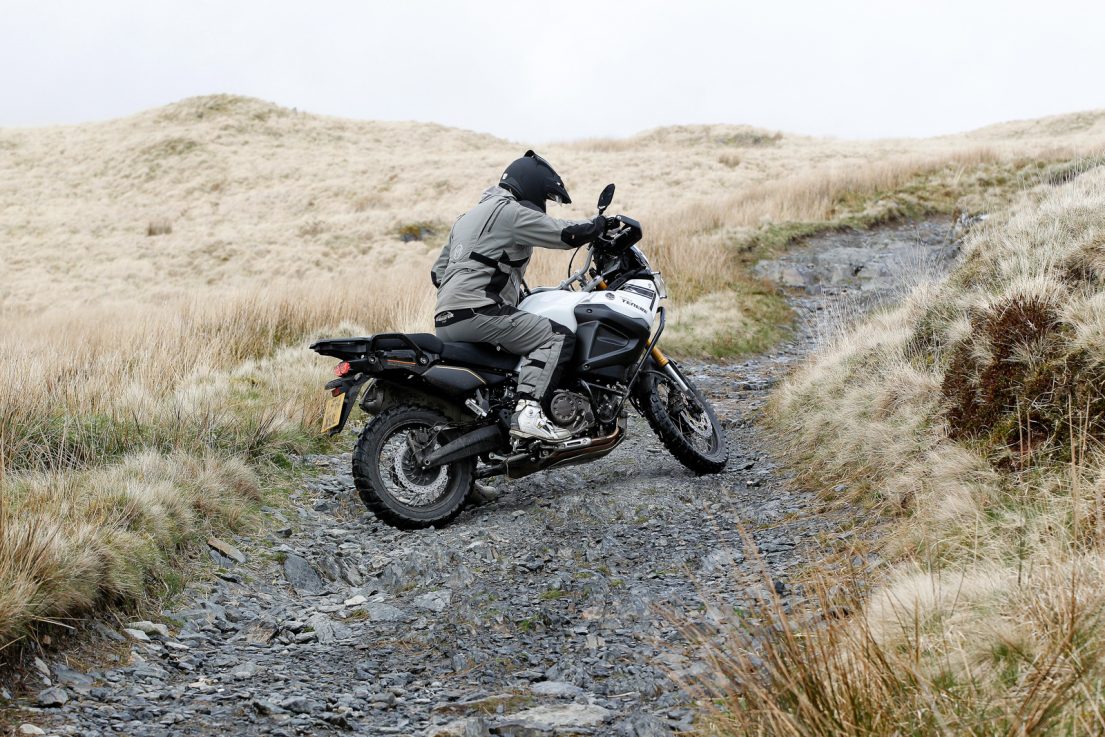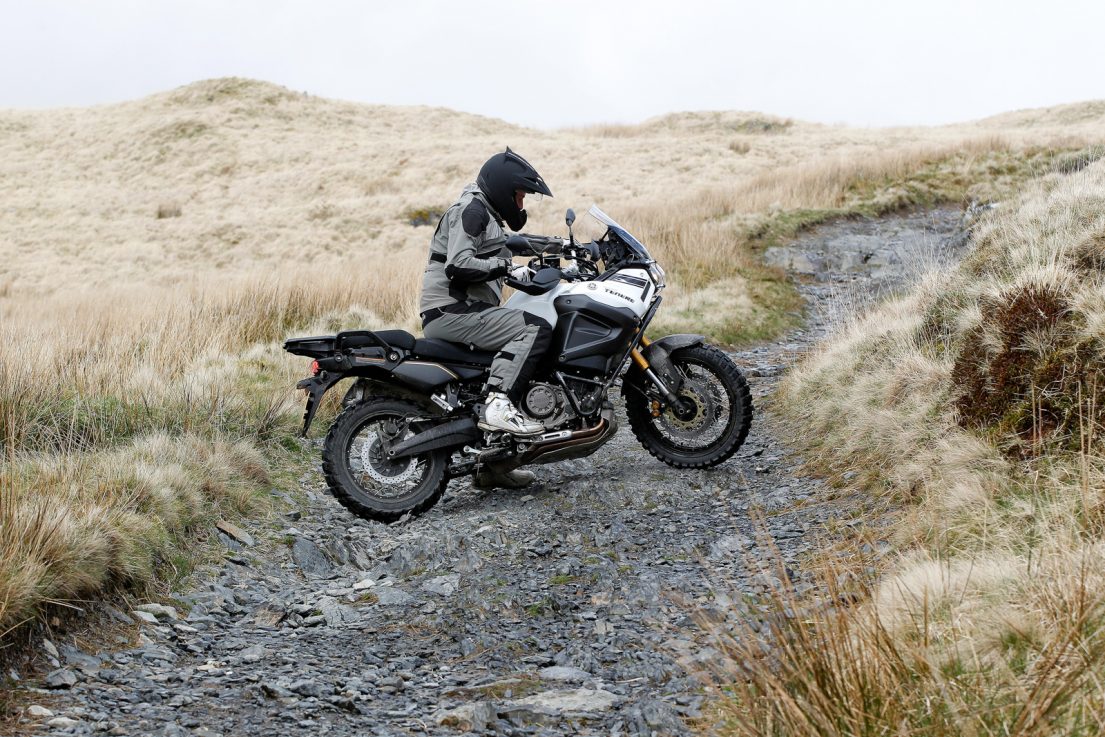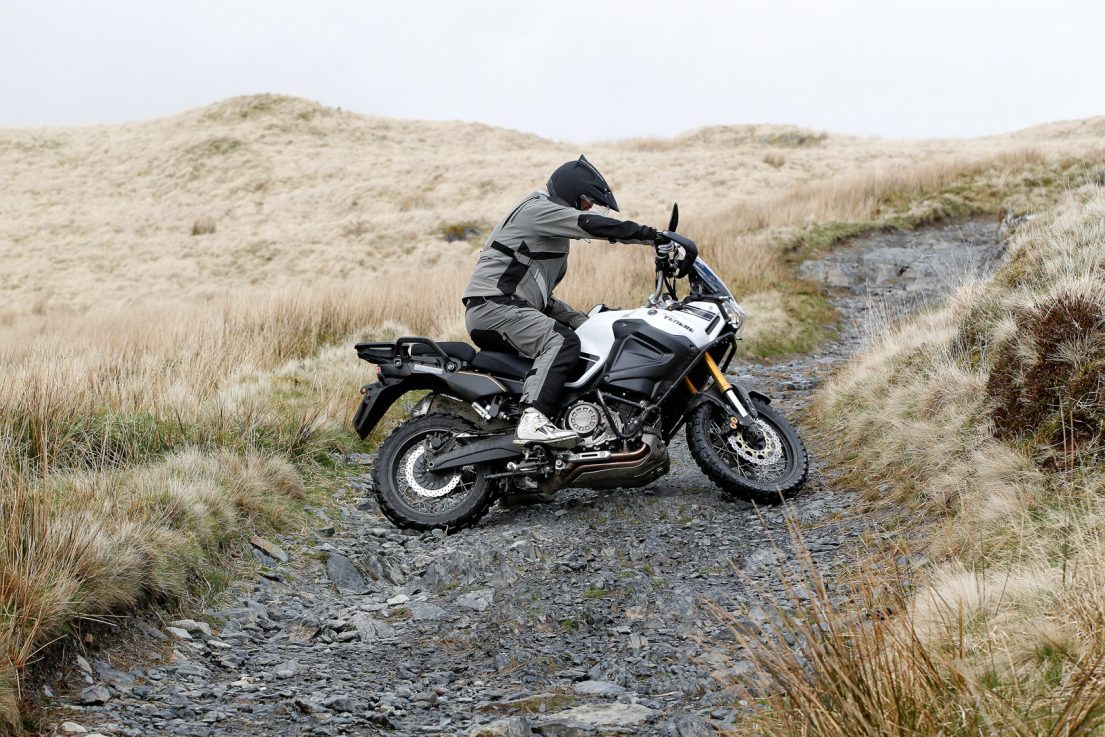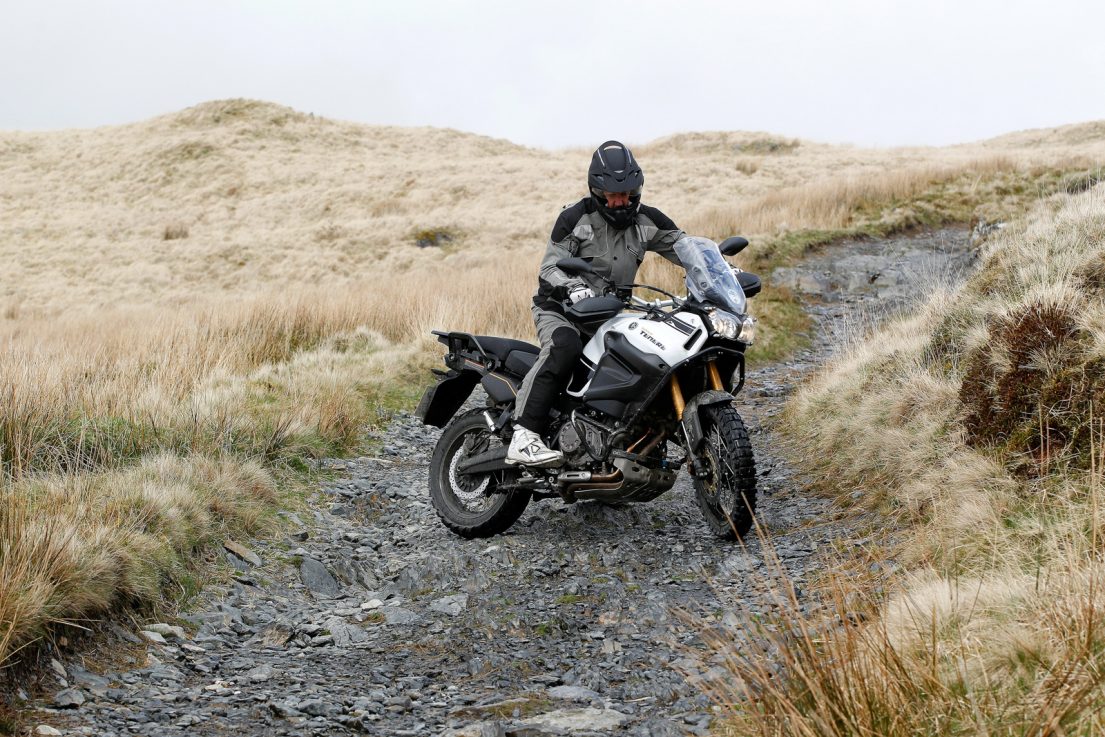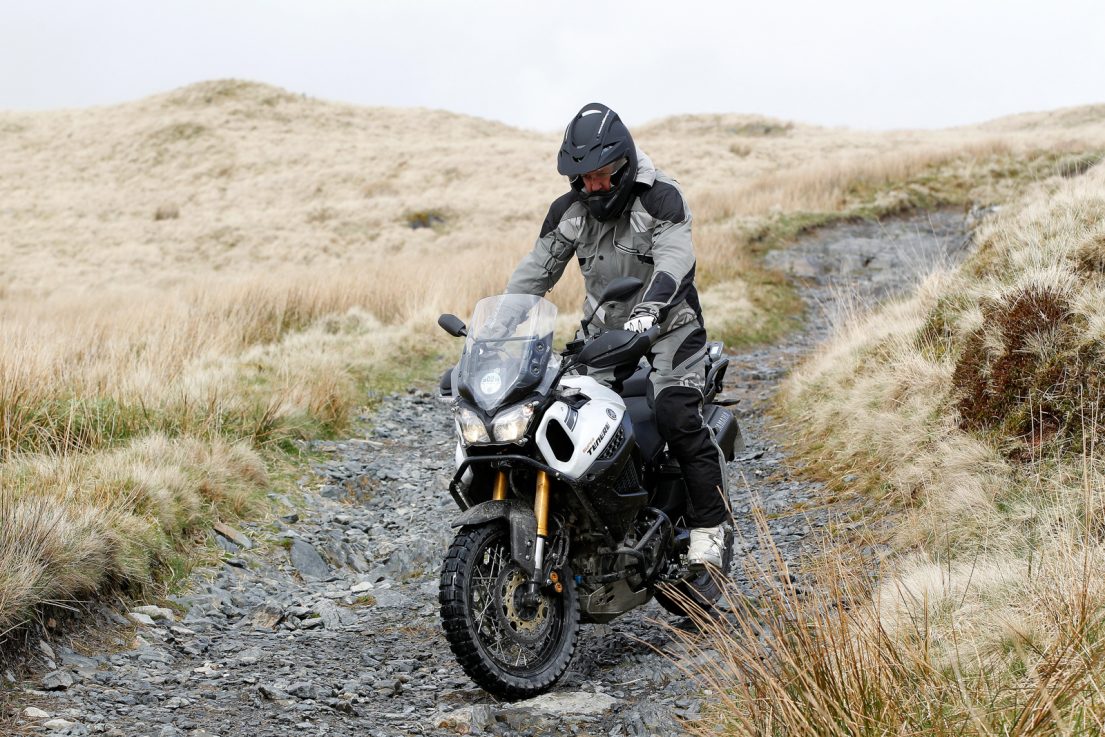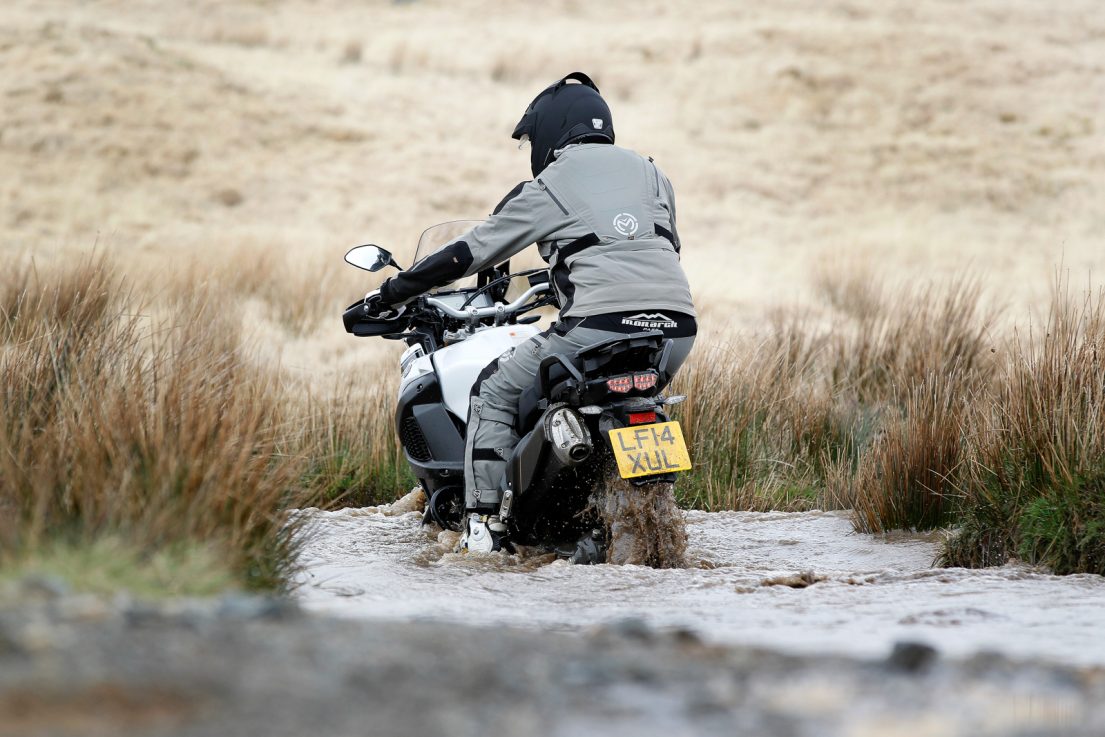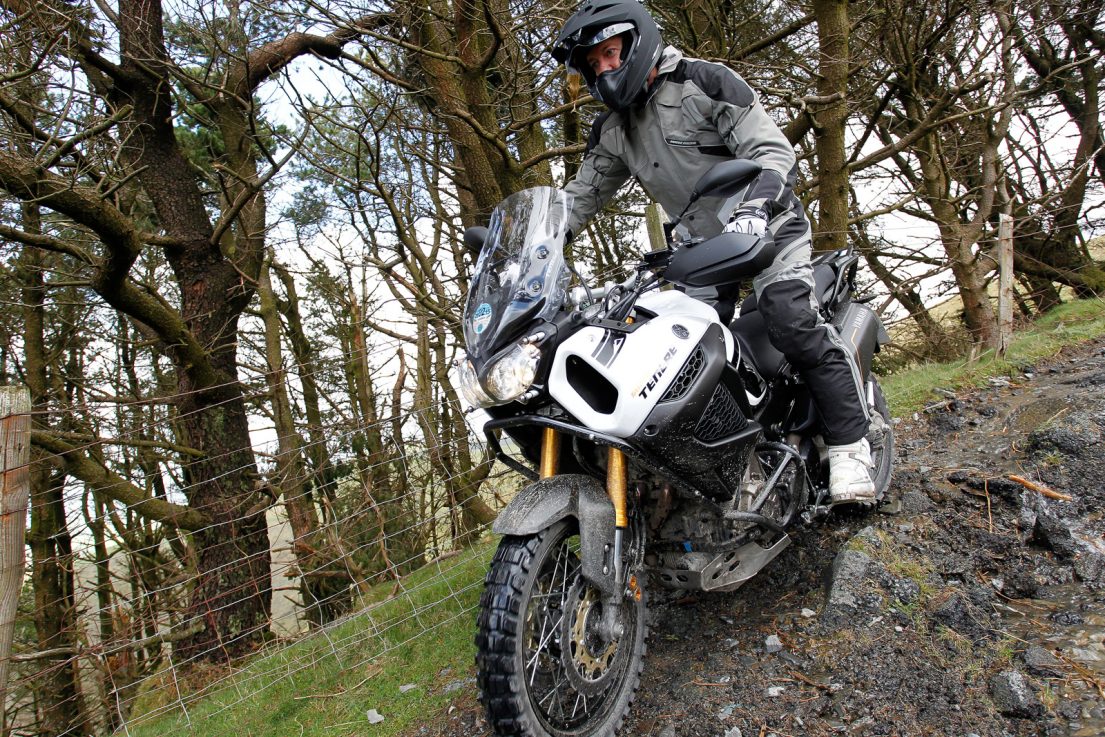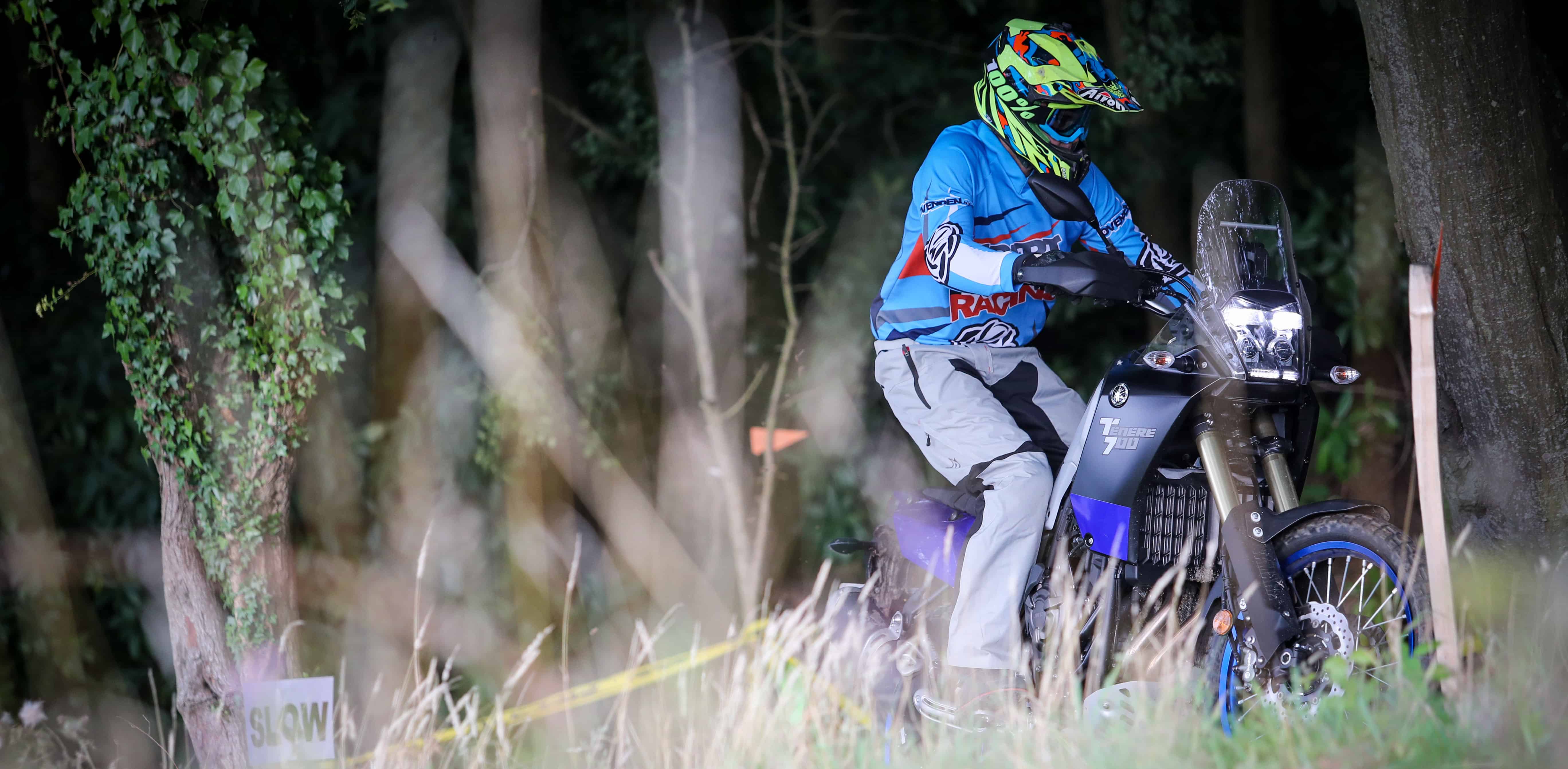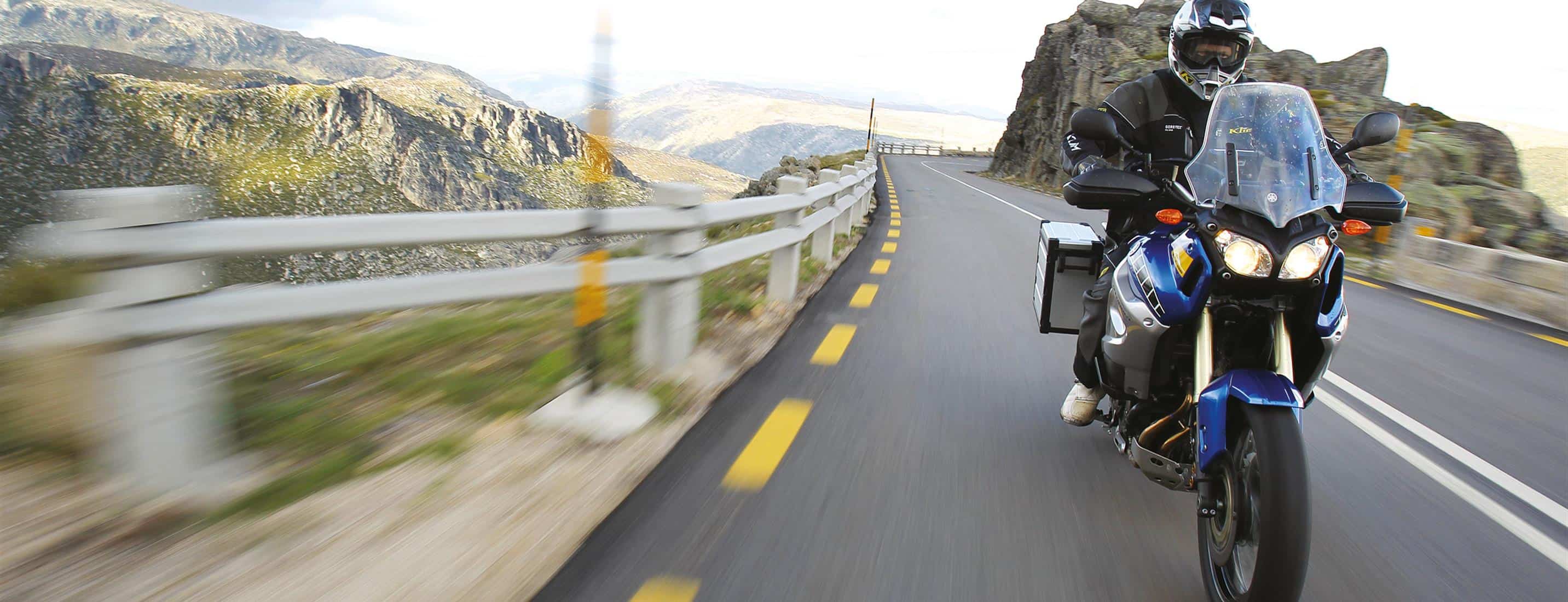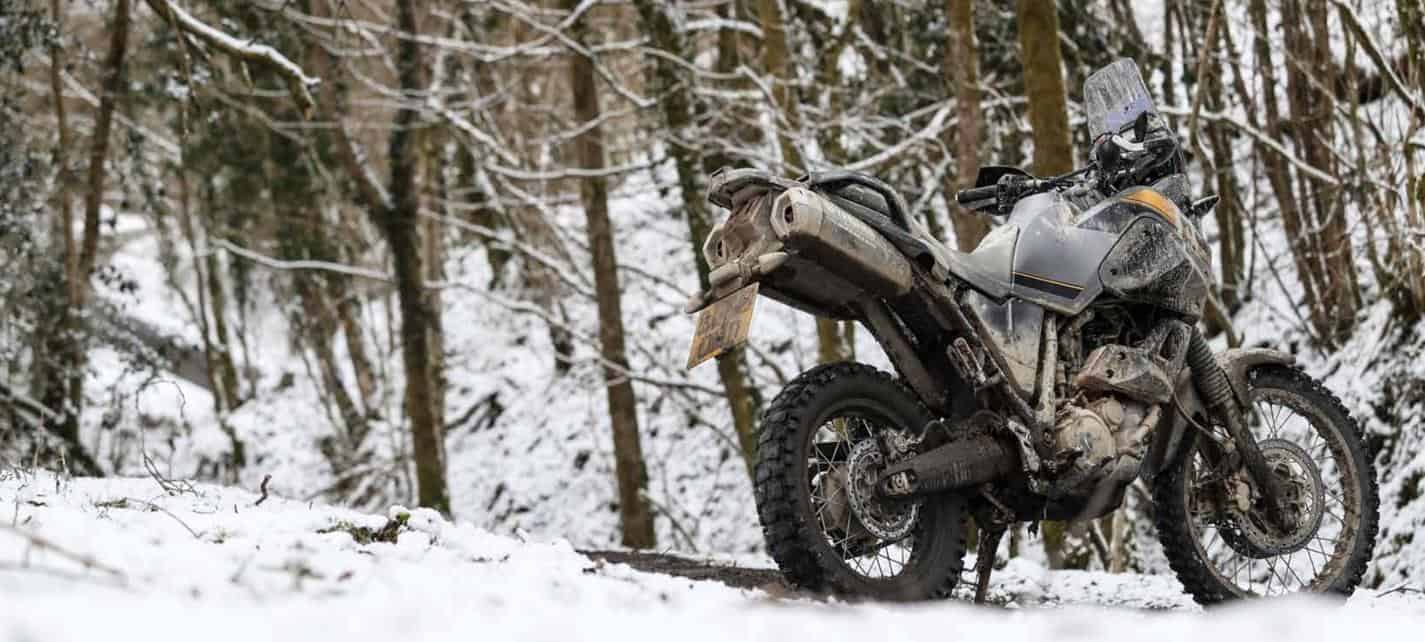It was a weird sensation. Nearest I can explain it, is to liken it to stepping through the wardrobe into C.S. Lewis’ Narnia. We’d hopped onto the Super Ténérés in the yard at Geraint Jones’ farm in Glyn Hafren, Powys (home of Yamaha’s Ténéré Experience), then gently followed the wee tarmac road that climbed into the sweet-scented pine forest, and five minutes later popped out into the middle of a vast landscape. Mountainous, with still, deep lakes (in fact reservoirs) filling the valleys, heather and bracken colouring the slopes in muted greens and browns, the ribbons of white water of streams trailing down to feed the lakes. And all of it seemingly empty. We stopped, cut the engines – all you could hear was the wind.
Not that you couldn’t reach this place using an enduro or trail bike. The point being, if you did that you might not absorb it so readily. An enduro bike likes to be ridden in an enthusiastic manner, it is a competition bike at heart, so it’s at its best when being fired along the trails at some speed. Even on a trail bike you might be willed to search out the nearest tricky climb. But on a big 1200cc adventure you’re more inclined to slow it all down and reflect on the majesty. You’re appreciating the ride, and you’ll still be finding challenge on the trails guiding 250 kilos of machinery with some accuracy, but you’re equally appreciating the nature.
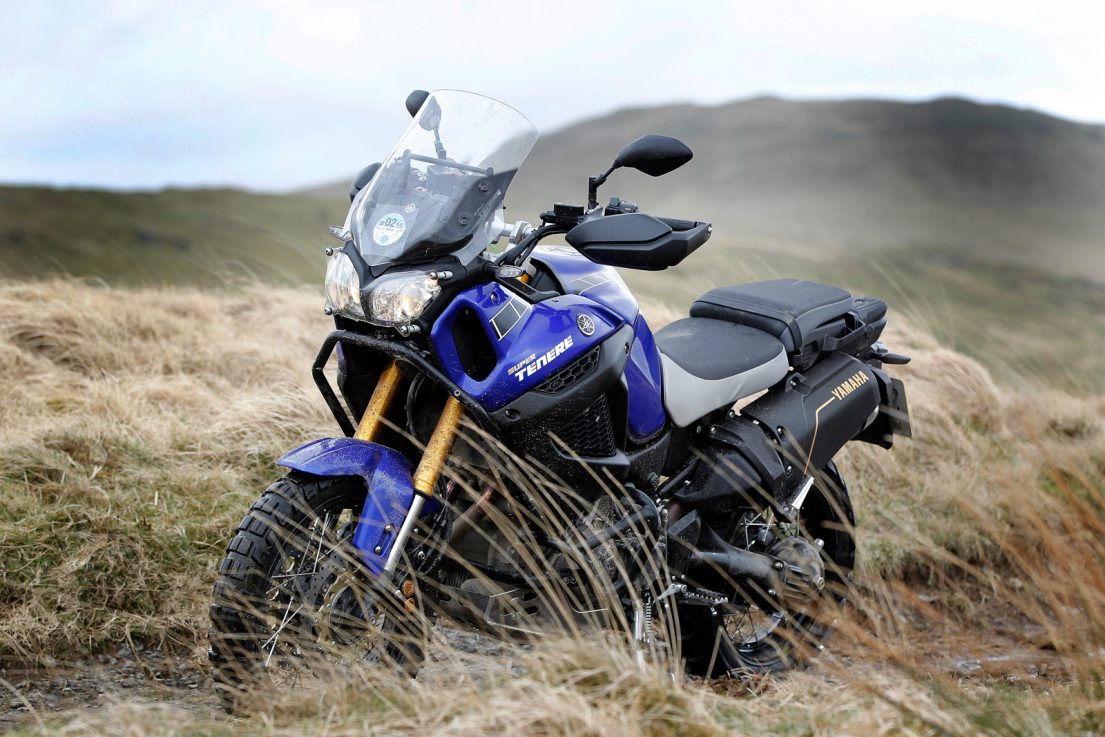
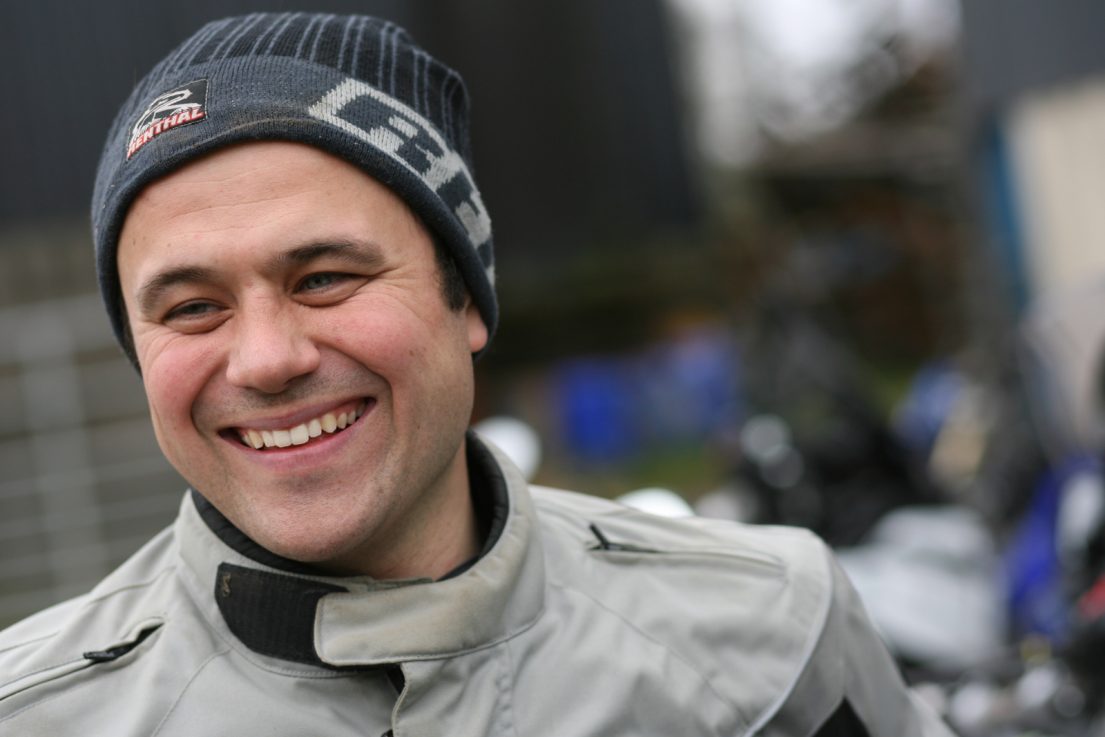
BIG RIGS
The comparison of dirt bike to adventure bike is probably much like a car to an articulated lorry. You’ve got very similar controls, the theory is very much the same, only the execution is very different. Having lived by the maxim ‘light is right’ for so many years it is something to discover that there is joy in riding something so very big off-road. But there are conversion factors you have to take into account if you’re not going to end the experience with injury or damage. There’s plenty of literature available on adventure riding techniques – we’ll not go over them in detail here – but we are interested in how your average dirt rider makes the conversion. So together with Dylan Jones, former BEC championship contender and now lead guide at the Yamaha Ténéré Experience, we’re taking a look at differences. And we’ve come up with five fundamental lessons you need to take on board before going big on the big bikes…
Lesson one: consider the size
“The first thing you have think about is you’re riding something that weighs two-and-a-half times the weight of an average enduro bike,” explains Dylan.
It’s a simple statement but it is fundamentally important. Yes, one Super Ténéré is the equivalent of two and a half WR250Fs. So when you’re attempting to hustle the big bike along the trails you have to bear that in mind. It means you are extremely unlikely to be able to lift, let alone lighten the front to float it over a ditch or a log. You’ll do no more than lengthen your arms in trying to do so. So you have to ride through things you would otherwise fly right over.
And consequent to that you have to consider the impacts your front rim will take if you hit a ditch, a log or a rock ledge with any speed. On an enduro bike you’ll probably bounce over, with the adventure bike you’ll just smash that rim into the shape of a 50p coin. It’s happened to us, buckling the rim on an HP2 hitting no more than a 4” ledge – albeit at speed. And it’s happened to others – a few years back on a GS Trophy event in South Africa, Brit journo Warren Pole lost control of his F800GS and bounced down a fast gravel road. The weight of the bike meant the rims were all but pulled off the hubs. So, you have to take the weight issue seriously.
Lesson two: consider the speed
“Once you’ve got used to the weight you have to consider that everything has to be done slower,” continues Dylan.
Speed on adventure bikes varies, usually in an opposite direction to an enduro bike. An adventure bike on the road can be much faster, silly fast if you like. A BMW R1200GS will lick along at 120mph, no problem. The latest KTM 1190R Adventure, with 150bhp, will go even faster. Only remember on many adventure bikes, especially with wire spoked wheels you may well be riding on tubes, not tubeless tyres, and if these puncture it can have catastrophic consequences. As well, if you’re riding on dual-purpose tyres there can be a lower speed recommendation, something like 160km/h (100mph). So on tarmac an adventure bike races away from the enduro, even in the turns.
Off road, it’s generally a reversal. On the Ténéré Experience we were mostly riding rock and stone based trails. There’s just no way you can race these on a big adventure bike. Physically and mentally you can go the speed, but if you try to do it physically you’ll soon find the weight of the bike defeats you. You’ll slam into every rock and the suspension will not cope given the weight being thrust through them. On technical going, you don’t ride like an enduro rider, you ride trials style.
“You really have to pick your way,” says Dylan. “And the lines are very different to an enduro. You are considering constantly the lack of ground clearance, so unless you can carry a little momentum to float off a rock step then you have to consider an alternative line. Typically you have to ride in the bottom of the ruts, you’re looking for the well-worn route. Fancy stuff is almost physically impossible.”
However, adventure bikes are typically faster than an enduro on gravel. Not that this is a good thing. The issue with speed on gravel is not achieving it, any monkey can twist a throttle, it’s scrubbing it off – slowing down on gravel is a difficult matter indeed. The adventure bike does hold an advantage (in part) due to its weight pushing the tyres into the gravel, but fast speeds on gravel on a big bike is a game of Russian roulette. Stopping is the one issue, the other is hitting the deep wash-out you didn’t see – again the weight, creating a huge kinetic force means the crashes will be seriously big.
In fact speed is the biggest single factor enduro riders need to appreciate when making the conversion to adventure bikes. There’s stuff that your experience will make very achievable for you, but you may not be so understanding of the consequences when doing it on an adventure bike. Modern adventure bikes can more than replicate the speed of big bore Dakar racers of the past, and big speed on big bikes off road is no safer today than it was then. It might be big but it’s not clever…
Lesson three: consider the tyres
Adventure tyres make FIM enduro tyres look positively aggressive. Their design is again limited by the weight issue. They need to be robust to take the weight and robust to take the power too. If you had a conventional knobbly on the rear of one of these it would be ripped to shreds in seconds. So the knob pattern is much broader and way more shallow, not even 10mm deep. Even made like this they can last barely much more than 1-2000 miles, or just a couple of days, if ridden aggressively on the trails.
The sizes are far from ideal too. Some big adventures, like KTM’s 1190R do still have 21” fronts and 18” rears, but most come with a 19”/17” combination and usually with wider rims. This combined with shallow knob patterns, and almost always a front tyre with a scarily rounded profile, means they struggle with side grip, and even more with any grip at all on slick surfaces.
Dylan: “That’s another reason to use the ruts, they hold the tyres. Even venturing onto the central grass strip left by 4x4s in the lanes can cause you to fall. The front tyres just push and if the weight shifts too much then you’re down!”
Lesson four: rider aids do help
Enduro teaches self-reliance. You learn that when the front skids on the brakes then you release the brake. If the back spins up under acceleration then you typically hook into it, body weighting, using the sideways trajectory to finish off a turn. You probably grandstand a bit, too.
Lock the front on an adventure and probably the first you know about it is when your face smacks the dirt. As well with over 100bhp at the rear wheel a bit of wheelspin can become a lot very quickly. Get a 250 kilo adventure too sideways and things get nasty. The speeds can be deceptive, too. We’ve seen a Cagiva Canyon (with Ducati 900 motor) get too sideways on a forest road, then digging in, flicking the rider off and flicking itself up the track. There was probably 100 metres from the first dig to where the bike ended up in some bushes. You have to respect them.
“Coming from enduro we didn’t immediately think we’d need ABS and traction control,” explains Dylan, “but you soon realise they make life a lot easier. The ABS on the Super Ténéré is very good, it doesn’t cut in too early and from our experience we’d say 95% of the time it aids rather than hinders the rider.
“Traction control again for most people, say on gravel – it helps. Certainly with less experienced riders because they haven’t got the finesse with the throttle control. Even for me and Dad (Geraint Jones, 10x British enduro champion) we like it, it means we can get sideways intentionally but the traction control stops it going too far. We actually have more fun with it.”
Like many things, though, there are limitations. Riding a tricky trials-type uphill it was better to have no traction control, so you could spin the tyre slightly at the bottom to dig through the top layer of the soil and generate grip and so better momentum. For slow-speed stuff, essentially.
Lesson five: the importance of your feet
Dylan: “From my point of view, I think its important to get people to put their feet down in the tricky areas because the problem with these bikes is if you get them at a bit of an angle then you’re over, so when it’s tricky – especially when it’s me because I’ve got short legs – it’s a good idea to get the feet down early because once it goes you can’t save it. Curiously road riders can be afraid to put their feet down, where enduro riders can be quite relaxed about it – when we need to put our feet down we put them down.”
The feet-up feet-down argument isn’t quite so clear-cut. Taller riders will often find stood-up trials riding through tricky sections an advantage, only know that you have to throw in the towel a lot earlier than you might on an enduro. As Dylan says, once the centre of gravity starts shifting away from directly above the tyre contact patch then these beasts will quickly start toppling and the weight and lack of grip from the tyres means they’re soon over.
That weight can be a real threat to your feet too if you don’t get them clear quickly. Again, experience in the GS Trophy has seen quite a few riders suffer crush type injuries to their feet where they trapped them under the bike in a crash or fall. While most adventure specific boots look like a cross between a trials boot and a road boot – probably best for touring rather than off-road – we prefer heavy-duty motocross boots for this job, simply for the protection, 250kg is a lot for an ankle to bear…
The Hill Climb – climb down
BEING OUT THERE
So you can see there are some responsibilities that come with adventure riding. It’s easy to under-estimate the job. It’s easy to get carried away. It’s easy to inadvertently have a big crash if you’re not aware of the limitations. It’s not like enduro, not even like trail. And yet it is very rewarding, a great challenge for a rider still. And as a way of seeing the great outdoors it’s very hard to beat.
“You mostly enjoy being out and about and seeing the scenery,” confirms Dylan. “Of course it doesn’t create the same buzz as riding an enduro because everything has to be done slower and you can’t ride some of the extreme stuff, but then again riding some trails that wouldn’t be very interesting on an enduro bike are very interesting on an adventure bike because it makes it that much more of a challenge.
“Around here in this part of Wales we have some amazing riding for these bikes, too. There is so much media focus on round the world trips, or remote African expeditions and such, but its surprising how much good riding there is for big bikes here right on our own doorstep. More than enough to at least lift your skills to a very high standard before setting off on a continental adventure.”
There are a lot of enduro riders already hooked on the big bike scene – you’ll find a Super Ten or a GS in their garage parked alongside the EXC – but there are many more who haven’t yet figured it out. Yeah, they’re missing a trick…
THE YAMAHA XTZ1200 SUPER TENERE OFF-ROAD
After a day in the Welsh mountains with the Ténéré Experience what was our opinion of its off-road capabilities?
Well, yes, it’s good. What we really enjoy with this bike is the power, more specifically the bottom end power. The motor is torquey and isn’t constantly snapping at the throttle, wanting to wheel-spin into the distance. It’s perfectly happy to plod along, keeping a secure feel on the rock or gravel under its tyres (Metzeler Karoo 3s) and giving you the time to pick a safe route. It’s well balanced, not overly top heavy, and you can stand or sit with equal comfort.
The aids – the ABS and traction control – both make sense in an off-road application and do what they’re intended to do. Dropping down a wet rocky trail we could feel the front brake working and then automatically letting off as it went over a particularly slippery bit, so every now and again you might find yourself going forward a little faster than you intended, but by picking a good line, with space to spare, the overall effect was spot-on.
We did a little fun riding in a climb over a rocky section in a gully. Again the big Yam impressed, with the traction control off you could launch it up the early section, then feather the throttle over the trickier wet rocky parts and when the gradient became too steep it was pretty straight forward to do a recovery and ride back down (although a shorter rider might not immediately agree).
So yes, we really liked it. A new GS is more techy, a new KTM Adventure is more nimble (with it’s proper enduro-sized wheels), but the Super Ténéré still has enough to satisfy and that powerful but gentle engine is ideal for the dirt sections given a steady approach. It does the job!
FANCY A GO?
We really enjoyed the Ténéré Experience. This is a world-class location, excellent bikes (the new 700 Ténéré has arrived on fleet), and while these are tours rather than riding lessons, Dylan and the team will appraise you of the techniques if you need or ask. It’s a great way to see if the Ténéré / Super Ténéré models are for you, but it’s also an awesome adventure ride in its own right. Big country for big bikes – we’re telling you, you’ll have a great time.
For more information https://www.yamaha-offroad-experience.co.uk/tenere.html
01686 413324
RELATED POSTS
YOUR THOUGHTS?
There’s plenty of experience and wisdom among adventure riders. What are your thoughts, what would you pass on to a big adventure bike newbie in terms of advice? Please, feel free to add your own comments below…

